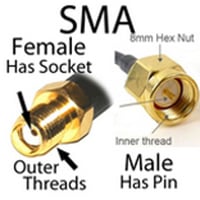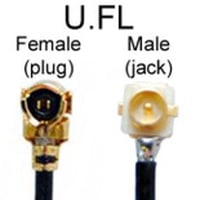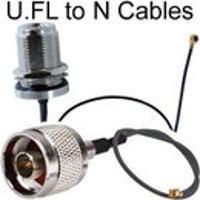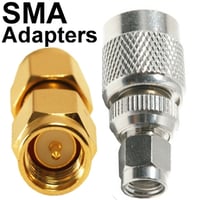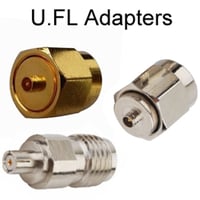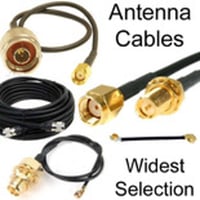Large NEMA-Rated Enclosures
NEMA Ratings for Electrical Enclosures:
NEMA (National Electrical Manufacturers Association) provides standards for use in classifying electrical enclosures and housing in North America for industrial applications. NEMA rates products protection against hazardous environmental elements like dust, water, temperature, and corrosive agents. NEMA ratings define the acceptable functionality of protective enclosures in hazardous conditions.
NEMA enclosures are classified according to their protective characteristics and assigned designated numbers and letters to represent their protection level.
NEMA standards are not equivalent to IP ratings. NEMA standards are concerned with general functionality in hazardous conditions, while IP standards are centered around weatherproofing and protection from solids and water.
A rough equivalence comparison can be made of NEMA and IP standards:
| IP | NEMA |
| IP20 | 1 |
| IP22 | 2 |
| IP55 | 3, 3X, 3S, 3SX |
| IP24 | 3R, 3RX |
| IP66 | 4, 4X |
| IP53 | 5 |
| IP67 | 6 |
| IP68 | 6P |
| IP54 | 12, 12X, 13 |
What are large NEMA enclosures?
Large NEMA-rated enclosures are a type of electrical or electronic enclosure that is rated following the National Electrical Manufacturers Association (NEMA) proprietary standards for enclosures. The NEMA accreditation described further on denotes the enclosure as meeting all the requirements specified by NEMA. The term NEMA box may also be used to describe these electrical enclosures, though not all electronic enclosures described as NEMA boxes carry an official rating, but rather describe the enclosure as being suitable for a harsh environment.
Large NEMA enclosures provide competent housing for the installation of electronic devices such as networking equipment in hazardous or outdoor environments where sensitive technology is vulnerable to environmental exposure and damage. NEMA enclosures are specifically designed and manufactured to be able to withstand the ingress of dirt, dust, and moisture that can corrode electronics. The housings are also able to protect equipment from solar radiation, extremes of heat and cold, and impacts.
RoHS and Conflict Minerals Regulation compliant large NEMA enclosures
Our extensive selection of large electronic enclosures are manufactured to a high standard using materials of good provenance and manufacturing methods that are compliant with the following pieces of domestic and international legislation:
- Restriction of Hazardous Substances (RoHS) directive / Directive 2002/95/EC
- The Conflict Minerals Regulation
- Section 1502 of the Dodd-Frank Act
Large NEMA enclosure size and dimensions
It is important to select an enclosure of the right size in which to house your assembly. Large electronic enclosures have a length (or height depending on orientation), of at least 12 to 18 inches. Extra-large NEMA boxes are bigger still with a length of 18 inches and upwards.
These rugged large enclosures provide enough room for spacious and secure mounting of a range of components. Most large enclosures have a metal back panel that may or may not be pre-drilled for mounting items within the enclosure. DIN rails can be readily installed for a reliable and secure mounting system. Accessories and attachments can be procured to mount the enclosure on a wall or pole as required. Enclosure knockouts are provided with grommets and custom knockouts for cable glands, couplings and vents can also be made.
They can be customized with a variety of latching options and design, as well as robust hinges that are capable of holding the enclosure door open while personnel work on the equipment.
Some enclosures are powered with 120V or 240V mains power and a convenient outlet within the enclosure. Powered NEMA boxes can also drive ventilation fans and heaters for precision thermostatic control of the internal environment.
Large NEMA box applications
The applications for a large electrical enclosure are quite varied and go beyond networking and telecommunications.
Because the enclosures are rated for their strong seal and structural integrity, they are suitable for a range of environments including outdoor locations, wash down areas, catering, medical and industrial settings where there may be exposure to volatile or corrosive substances. They are reliable over a wide temperature range (e.g warehouse refrigeration) and perform just as well in cold icy conditions as in humid or dusty and dry ones.
The room these large NEMA boxes provide is ideal for the housing of complex and critical equipment and components such as:
- Large batteries
- Machinery control consoles
- Junction boxes
- Wiring boxes
- Surge suppression devices
- Industrial consoles
- Marine electronics
- Programmable logic controllers
Large enclosure materials
Several materials have the physical properties and machinability for manufacturing high-quality electrical enclosures that can withstand a range of environmental challenges. The selection of a metal or plastic material for your enclosure will depend on the type of equipment that is housMetal versus plastic for large NEMA enclosures
NEMA enclosures are either made from metal or plastic, with both types of material capable of housing equipment following the NEMA standards. The choice of a plastic NEMA enclosure versus metal will largely depend on the application for which it is used. Here are some key differences between the two materials:
Plastics
- Allow radio frequency energy to freely pass through the walls of the enclosure, meaning they can house antennas and other forms of radio frequency equipment.
- Easy to shape and customize.
- Generally lightweight materials.
- Easier than metal to damage or vandalize.
- Over time plastics will gradually deteriorate.
Metals (steel, aluminum)
- Strong, resistant to physical impacts and vandalism.
- If required, metal delivers almost total shielding from electromagnetic interference.
- Metals have high thermal and electrical conductivity.
- Metal boxes often need to be grounded.
- Metal enclosures require more complex manufacturing processes and may come at a premium.
- Metals are heavier than plastics.
- They are unsuitable for housing antennas or equipment that are designed to radiate or receive radio frequency signals as the enclosure acts as a barrier.
Large plastic NEMA enclosure materials
- Fiberglass reinforced polyester (FRP) is a superior material for electrical and electronic enclosures and usually carries a premium as part of high-specification enclosure designs. FRP is impregnated with glass fibers that differ according to the use of the plastic. E-glass is used for electrical applications, S-glass is added for strength, and C-glass has superior corrosion resistance. These are combined with polyester resins to create strong and stiff enclosures, with strength enhanced by increasing percentages of fiber. Glass fiber-reinforced plastic is advantageous for electrical installations because of its insulative properties. It is resistant to weathering, with good fatigue-resistance and strength retention over time. With the addition of UV stabilizers, fiberglass-reinforced polyester resists photodegradation.
- Polycarbonate is another high-quality thermoplastic that is widely used for enclosures because of its durability and robustness. It is clear, but it can be colorized and have UV stabilizers and fire retardants added for a specified finish. It is thermally stable over a wide range of temperatures (40 to 248 Fahrenheit / 4 to 120 degrees Celsius) and resists degradation from sunlight. This high-performance plastic has exceptional impact resistance, is non-corrosive and good resistance to solvents. It is also lightweight, making it ideal for mounting at height.
- ABS (Acrylonitrile Butadiene Styrene) is a cost-effective plastic for enclosures that are lightweight and resilient. It is strong and stiff and has demonstrable durability in a range of environments, particularly outdoors. It withstands impacts and has high tensile strength as well as good scratch resistance and chemical resistance. Over time, ABS has a slightly greater vulnerability to photodegradation by sunlight. ABS will provide good heat resistance though cannot tolerate temperatures as high as other plastics. Its temperature range is 0 to 176 degrees Fahrenheit (-17 to 80 degrees Celsius).
- PVC Polyvinyl Chloride (PVC)a thermoplastic with comparable strength to polycarbonate, while typically being more cost-effective. It is machinable and easily shaped into a wide range of enclosure dimensions and designs, but retains rigidity and stiffness. PVC also provides great thermal insulation and is resistant to the degrading effects of prolonged sunlight exposure. This lightweight plastic is intrinsically flame-resistant and will self-extinguish, which is a desirable property for materials used to house electrical equipment.
Large metal NEMA enclosure materials
- Stainless steel fabricated NEMA boxes are a hardwearing and resilient option for rugged outdoor enclosures. As its name describes it resists corrosion and staining due to its significant chromium content, which resists oxidation (rusting). The stainless steel is manufactured to several grades and maybe powder coated for marine, corrosive or industrial environments, or left bare. Stainless steel enclosures have a significant hardness and deliver good protection from moisture, dust, UV, chemicals, and temperature extremes. Where they are well sealed, these enclosures prove resilient in marine or washdown environments. They have significant longevity and service life and are unlikely to deteriorate over years and decades in place. They deliver outstanding value in comparison to other types of steel.
- Die-cast aluminum is a particularly resilient choice for electrical enclosures and despite being lighter in weight than steel, aluminum has a good strength-to-weight ratio. This high-quality metal is formed into enclosures by molding hot metal under pressure and produces a precision finish to the enclosure parts. It works well in harsh environments and can tolerate high operating temperatures. Over time it retains its favorable strength stiffness and hardness and withstands corrosion well.
Why are large NEMA-rated enclosures important?
- The NEMA rating system benefits manufacturers, distributors, retailers, and users.
Purchasing enclosures that are built in accordance with authentic NEMA standards provides confidence that the enclosure will deliver the required level of protection for the equipment it houses. The NEMA standards not only specify the degree of environmental protection an enclosure delivers, but they also detail vital safety standards to protect personnel that handle the box and its contents.
When selecting an enclosure, a NEMA rating assists in the selection of the appropriate model. The provision of set standards means that both the manufacturer and customer can refer to a clear description of the capabilities and attributes of an enclosure.
- When selecting an enclosure size matters.
Sizing is important for enclosures as too much or too little space clearance can affect the sensitive or live equipment housed within the enclosure. If the enclosure is too small, the packing density of components and devices is increased. With this comes the potential for unwanted electromagnetic interference and overheating. Overheating is a problem that can become hard to manage in a tightly packed enclosure where there is little airflow to allow thermal dissipation. Conversely, not only is an oversized enclosure going to add to costs, it will take up valuable space or real estate in outdoor settings. In some cases, equipment mounted within an enclosure that is too big may run the risk of becoming jolted or damaged by impacts.
The prevention of corrosion and its causes is critical.
Corrosion is a progressive chemical degradation that affects metal components within electronic equipment. Once started, it cannot be stopped and will proceed through cables and wires and spread within equipment until they are destroyed. Often corrosion damage is only picked up when there has been significant damage to an electronic device. Impaired equipment often becomes dysfunctional, before visible evidence of damage is present with the corrosion of connectors and other components causing changes in resistance, leakage currents, short-circuiting and frank breakdown.
By housing and enclosure properly in a NEMA-rated enclosure, networking equipment, and electrical devices are protected from the causative factors that drive the corrosion process.
- Moisture is the primary driver of corrosion and works with airflow to corrode any exposed metal on which it alights. In high humidity environments, corrosion is accelerated.
- Dirt and dust can alight on metal surfaces and act as a humectant, attracting water to the salts that may be present in the dust to cause corrosion.
- Air pollution from vehicles or industry exhaust contains corrosive chemicals which can alight on components as particulates or within acid rain.
- Marine air is salt-laden and deposited salt will creep along and corrode exposed metal.
- Excessive sunlight causes photodegradation of plastic cable jackets and housings that can leave the metal unprotected. Temperature extremes also age components and cause condensation.
- Mechanical stress causes damage to cables and connectors that make them vulnerable to corrosion.
Enclosures that are resistant to both water and dust can effectively protect valuable equipment from these corrosive factors, which prolongs the service life of the equipment and saves money on costs and downtime.
Understanding the NEMA system - a closer look
The NEMA organization has an industry-led membership consisting of engineers, technicians, scientists, and business leaders. They have the experience and expertise to develop and deliver detailed standards that define the construction, composition, safety, tolerances, performance, and operating characteristics of electrical enclosures. The proprietary published standards that refer to electronic enclosures like the selection provided here are the NEMA Standard 250 Enclosures for Electrical Equipment. Below, we outline the key ratings for our large NEMA enclosures:
Type 1 NEMA enclosures
- Are for use indoors.
- Protect the components and equipment they house from the ingress of solid foreign objects.
- Prevent accidental personnel access to hazardous parts within the enclosure.
Type 2 NEMA enclosures
- Are for use indoors.
- Protect the components and equipment they house from the ingress of falling dirt.
- Protect against splashing and dripping water.
- Prevent accidental personnel access to hazardous parts within the enclosure.
Type 3 NEMA enclosures
- Can be used for both indoor and outdoor use.
- Protect the components and equipment they house from the ingress of falling dirt and windblown dust.
- Provide protection against rain, sleet, and snow and resilience against the formation of ice on the enclosure.
- Prevent accidental personnel access to hazardous parts within the enclosure.
Type 3R NEMA enclosures
- Can be used for both indoor and outdoor use.
- Protect the components and equipment they house from the ingress of falling dirt.
- Protection against windblown dust is omitted.
- Provide protection against rain, sleet, and snow and resilience against the formation of ice on the enclosure.
- Prevent accidental personnel access to hazardous parts within the enclosure.
Type 3S NEMA enclosures
- Can be used for both indoor and outdoor use.
- Protect the components and equipment they house from the ingress of falling dirt and windblown dust.
- Protect against rain, sleet, and snow and will remain operable when the enclosure is ice-laden.
- Prevent accidental personnel access to hazardous parts within the enclosure.
Type 3X NEMA enclosures
- Can be used for both indoor and outdoor use.
- Protect the components and equipment they house from the ingress of falling dirt and windblown dust.
- Provide protection against rain, sleet, and snow and resilience against the formation of ice on the enclosure.
- Provide additional protection against corrosion.
- Prevent accidental personnel access to hazardous parts within the enclosure.
Type 3RX NEMA enclosures
- Can be used for both indoor and outdoor use.
- Protect the components and equipment they house from the ingress of falling dirt.
- Protection against windblown dust is omitted.
- Provide protection against rain, sleet, and snow and resilience against the formation of ice on the enclosure.
- Provide additional protection against corrosion.
- Prevent accidental personnel access to hazardous parts within the enclosure.
Type 3SX NEMA enclosures
- Can be used for both indoor and outdoor use.
- Protect the components and equipment they house from the ingress of falling dirt and windblown dust.
- Protect against rain, sleet, and snow and will remain operable when the enclosure is ice-laden.
- Provide additional protection against corrosion.
- Prevent accidental personnel access to hazardous parts within the enclosure.
Type 4 NEMA enclosures
- Can be used for both indoor and outdoor use.
- Protect the components and equipment they house from the ingress of falling dirt and windblown dust.
- Watertight with protection against rain, sleet and snow, and ice.
- Prevent accidental personnel access to hazardous parts within the enclosure.
Type 4X NEMA enclosures
- Can be used for both indoor and outdoor use.
- Protect the components and equipment they house from the ingress of falling dirt and windblown dust.
- Watertight with protection against rain, sleet and snow, and ice.
- Provide additional protection against corrosion.
- Prevent accidental personnel access to hazardous parts within the enclosure.
Type 5 NEMA enclosures
- Can be used for both indoor and outdoor use.
- Dust-tight: protect the components and equipment they house from the ingress of falling dirt and windblown dust.
- Protection against splashing water, rain, sleet and snow and ice
- Prevent accidental personnel access to hazardous parts within the enclosure.
Type 6 NEMA enclosures
- Can be used for both indoor and outdoor use.
- protect the components and equipment they house from the ingress of falling dirt and windblown dust.
- Protection against splashing water, rain, sleet and snow and ice
- Watertightto temporary submersion and water sprayed from a hose. Not intended for continuous submersion.
- Prevent accidental personnel access to hazardous parts within the enclosure.
Type 6P NEMA enclosures
- Can be used for both indoor and outdoor use.
- Dust-tight: protect the components and equipment they house from the ingress of falling dirt and windblown dust.
- Protection against splashing water, rain, sleet and snow and ice
- Watertightto prolonged submersion and water sprayed from a hose. Not intended for continuous submersion.
- Prevent accidental personnel access to hazardous parts within the enclosure.
Frequently Asked Questions:
Are there other comparable rating systems to NEMA?
- Ingress Protection (IP) Codes refers to IEC60529 and EC60529 and is a rating system that specifies the degree of protection an enclosure provides against the ingress of dust, dirt, moisture, and other intrusions. IP ratings usually carry 2 digits. The first refers to the ingress of foreign objects and the second against liquids. IP67 and IP68 are ratings that specify an item as being watertight or waterproof.
- Underwriters Laboratories or UL codes is a Federally recognized system of certifications that can be carried by enclosures or related components specifying that they meet certain safety and performance standards. UL 50
Where should cable glands be installed on a NEMA enclosure?
When installing cable glands in knockouts on a NEMA enclosure, position the glands at the base of the enclosure. The cable should exit from the bottom of the NEMA box to prevent rain and moisture from running down the cable and into the enclosure. Use upper knockouts preferentially for vent plugs to allow hot air and moisture to escape passively.
What is a DIN rail?
DIN rails are a German, now widespread, system of metal mechanical support structures for the robust mounting of a variety of electrical and electronic components. The metal rails sit within an electrical enclosure on the backplate and come in a variety of dimensions. Most designs contain a metal flange on which the component can sit securely. They are readily mounted in plastic enclosures and can also be used for external mounting of the enclosure to a wall or pole.
LEARN MORE:

